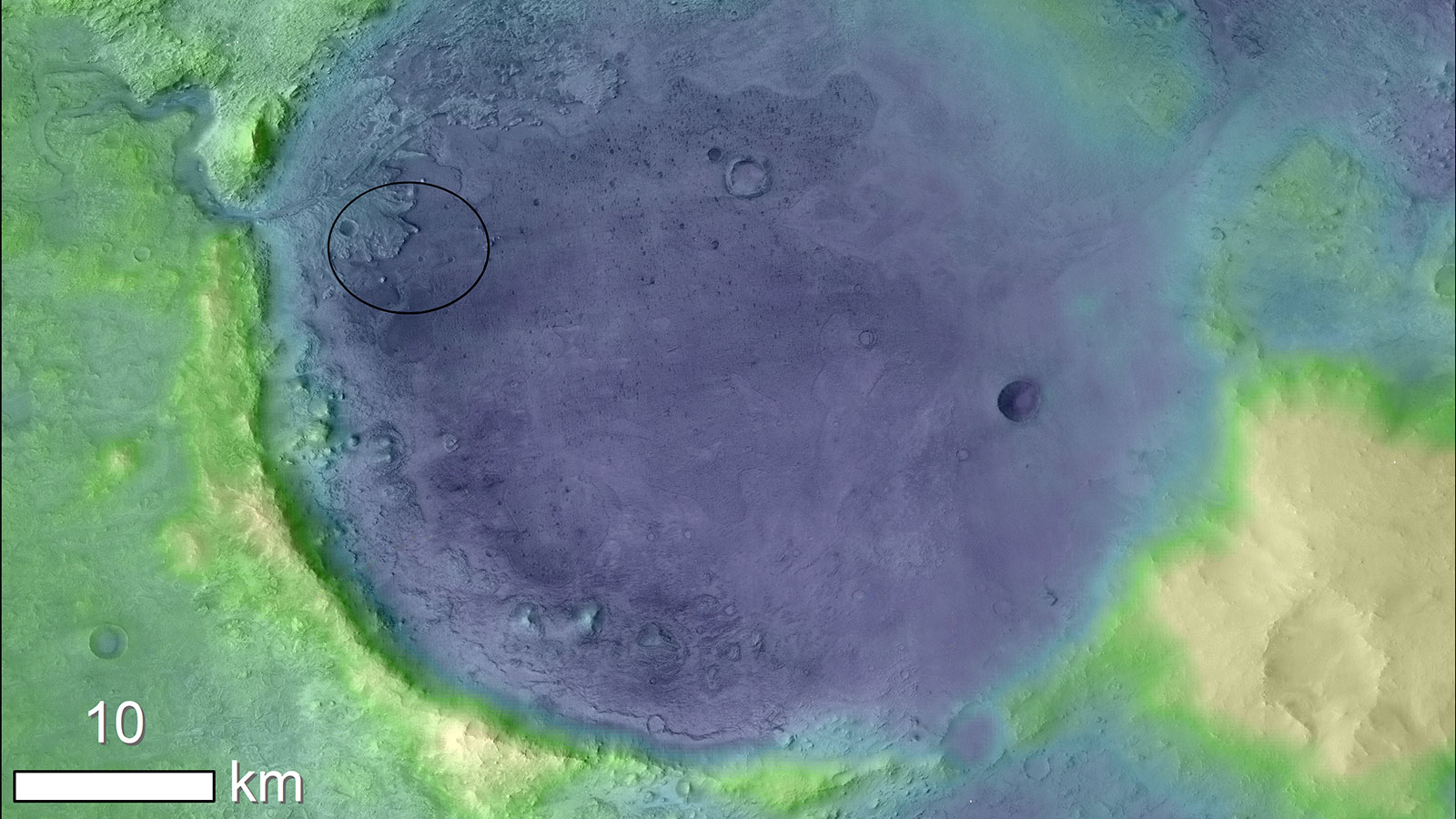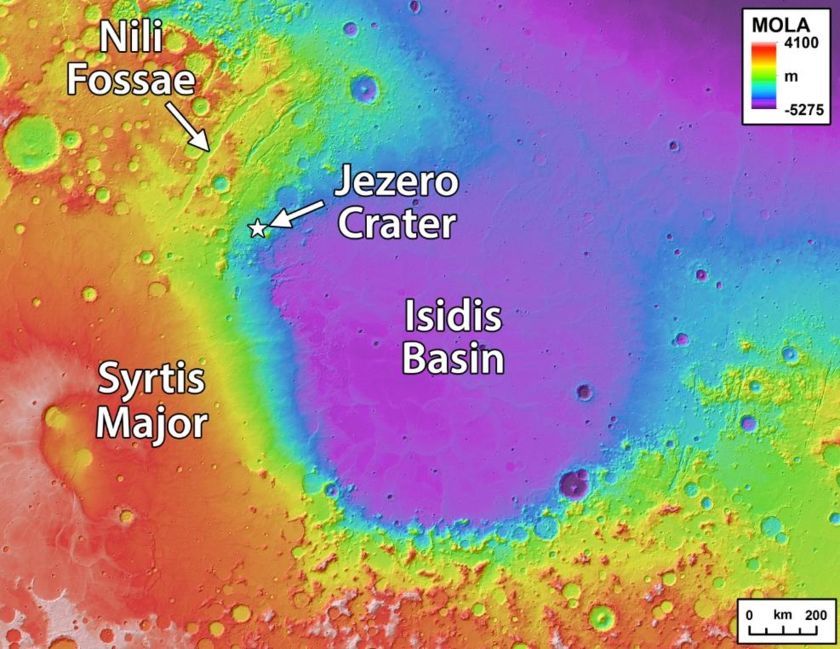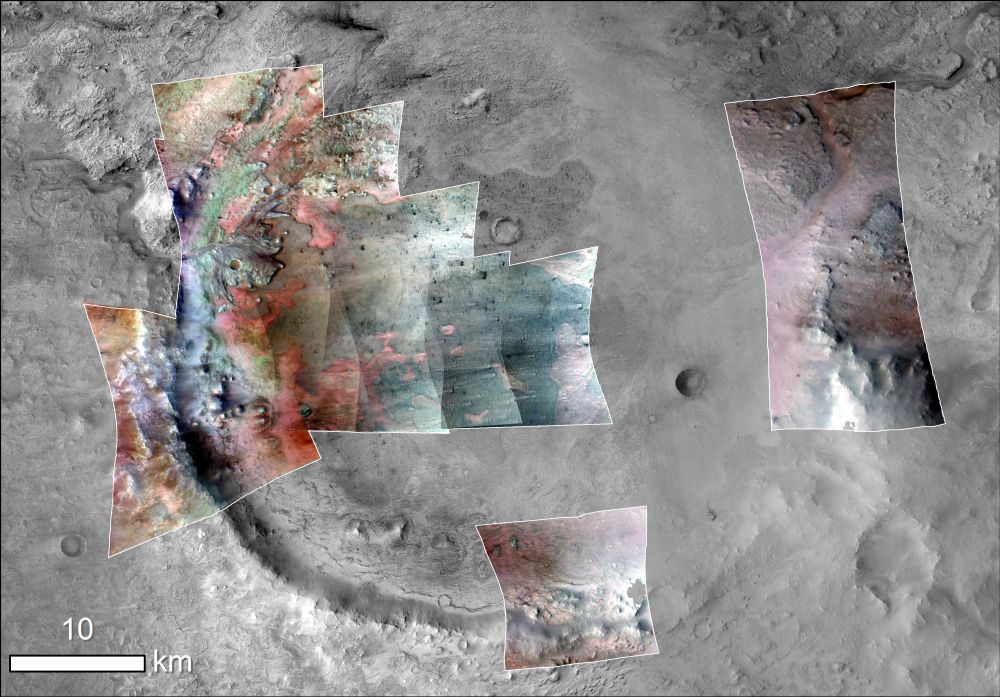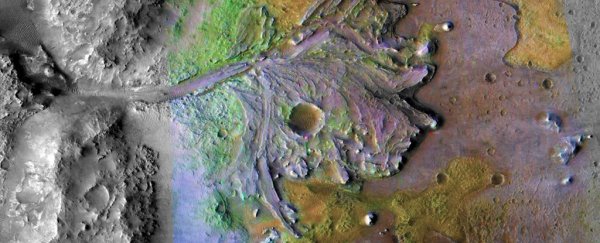Back in November 2018, NASA announced that the Mars 2020 rover would land in the Jezero Crater. Jezero Crater is a geologically diverse area, with an alluvial fan of sediment deposited by an incoming river. That sediment may contain preserved ancient organic molecules, and the deposit is clearly visible in satellite images of the Crater.
But the crater holds something else that has scientists intrigued, something that doesn't show up so clearly in visible light images: a "bathtub ring" of carbonates, which scientists think could hold fossils.
The Mars 2020 rover is upping the ante as far as our scientific inquiry into Martian habitability goes. When Spirit and Opportunity went to Mars, their mission was to find evidence of water, past or present. They did that.
When the MSL went to Mars, its mission was to assess the habitability of Mars, both ancient and modern. Now the Mars 2020 rover, which has yet to receive its actual name, has the grandest task of all: to search for signs of past microbial life. Or put simply: fossils.
 Planned landing area. (NASA/JPL-Caltech/MSSS/JHU-APL/ESA)
Planned landing area. (NASA/JPL-Caltech/MSSS/JHU-APL/ESA)
Jezero Crater was chosen for a few reasons. It's an ancient area, the site of a lake about 3.5 billion years ago. It contains landforms that old, including the river delta. It also contains the so-called "bathtub ring" of carbonates.
Carbonates can create long-lived fossil structures that can last for billions of years here on Earth. That includes seashells, coral, and stromatolites. And since Jezero Crater was a body of water, scientists think it's worth investigating the carbonate ring around the edge of Jezero Crater, to see if there are fossils there.
If your inner skeptic is balking at that, remember that the choice of Jezero Crater, and the search for fossilized life on Mars, is built on years of rigorous science. Nobody knows what we'll find there, on the carbonate-rich edge of the crater. But empirical evidence says it's the place to look.
 Location of Jezero crater, purple is low elevation and red is high elevation. (NASA/JPL/USGS)
Location of Jezero crater, purple is low elevation and red is high elevation. (NASA/JPL/USGS)
A paper published in the journal Icarus presents a detailed look into the mineral diversity in Jezero Crater, including the carbonate deposits on the edge.
The paper is titled, The mineral diversity of Jezero crater: Evidence for possible lacustrine carbonates on Mars. Note that the word lacustrine means "relating to or associated with lakes."
NASA's Mars Reconnaissance Orbiter (MRO) spotted the carbonates with its CRISM (Compact Reconnaissance Imaging Spectrometer for Mars) instrument. CRISM specializes in finding water-related minerals. CRISM images show significant carbonates around the rim of Jezero Crater.
 CRISM image of Jezero crater, green indicates carbonates. (NASA/JPL-Caltech/MSSS/JHU-APL/Purdue/USGS)
CRISM image of Jezero crater, green indicates carbonates. (NASA/JPL-Caltech/MSSS/JHU-APL/Purdue/USGS)
"CRISM spotted carbonates here years ago, but we only recently noticed how concentrated they are right where a lakeshore would be," said the paper's lead author, Briony Horgan of Purdue University in West Lafayette, Indiana.
"We're going to encounter carbonate deposits in many locations throughout the mission, but the bathtub ring will be one of the most exciting places to visit."
On Earth, some of the most ancient fossils are stromatolites. They date back more than 3.5 billion years ago. Stromatolites are layered structures formed by layers of cyanobacteria.
If Mars did support life in its ancient past, it's possible that that planet had its own stromatolites. And if it did, the carbonate ring around Jezero crater's paleolake is a good place to look for them.
"The possibility that the 'marginal carbonates' formed in the lake environment was one of the most exciting features that led us to our Jezero landing site. Carbonate chemistry on an ancient lake-shore is a fantastic recipe for preserving records of ancient life and climate," said Mars 2020 Deputy Project Scientist Ken Williford of NASA's Jet Propulsion Laboratory in Pasadena, California. JPL leads the 2020 mission.
"We're eager to get to the surface and discover how these carbonates formed."
If the carbonates formed at the lake's edge, then they likely did so during the Noachian Epoch on Mars. The Noachian was Mars' first epoch, and ended about 3.5 billion years ago.
At that time, scientists think that Mars had a relatively wet climate, and a CO2-rich atmosphere. Carbonates form when rocks, water, and CO2 interact.
The carbonates have more to tell us. They contain a geological record of climate changes on Mars.
Since they form due to interactions between CO2, water, and rock, their formation can record subtle changes in Mars climate over time. They can help tell the story of how Mars went from an ancient wet planet with a thick atmosphere to the cold dry desert it is today.
Scientists have also detected a rich deposit of hydrated silica on the edge of Jezero's ancient river delta. Hydrated silica also has the potential to preserve fossils, just like carbonates.
If the hydrated silica deposit is on the bottom of the delta, then it may also be an excellent place to look for fossils, especially buried microbial fossils. A paper detailing the hydrated silica deposit was recently published in AGU.
Not all of the carbonate deposits in Jezero crater are uniform. They are found in different areas, at different altitudes, and with different topographical features and spectral features. Perhaps the most significant area is what's called the Marginal Carbonates.
They exhibit the strongest and clearest carbonate signatures, and they're located on the western inner rim of the crater. The edges of the Marginal Carbonates sometimes coincide with changes in terrain and appearance. Scientists are eager to decipher what this all means.
 Marginal carbonates are outlined in red. (NASA/MRO/Horgan et al. 2019)
Marginal carbonates are outlined in red. (NASA/MRO/Horgan et al. 2019)
Of course, that can only be done with in situ measurements by the Mars 2020 rover. The rover will reach the Jezero Crater on February 18th, 2021. Once it's there, the hard work of a lot of people will start to pay off.
There are some locations on Earth, often high up in the mountains, where fossilized sea shells poke out of the rock, easily visible to any passer by. Their location led early thinkers like Leonardo Da Vinci to question the Biblical flood story.
Mars is unlikely to give up its fossils so easily, if it has any. But pondering our own knowledge of fossils, and how that knowledge has grown over time, makes one wonder what we'll find on Mars, and how that discovery might shape our beliefs.
This article was originally published by Universe Today. Read the original article.
